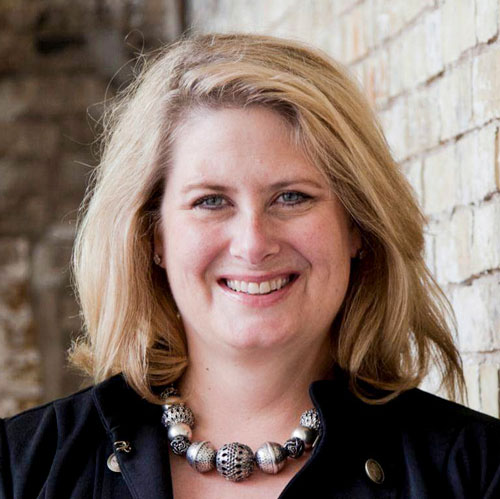Ulta Beauty promises all things beauty, all in one place. It is up to Anthony Pastore, director of store design, to make sure that the brand’s retail spaces deliver on that promise. Guided by a passion for aesthetics, function, and technology, he is making it happen.
Pastore is a designer who understands the physical realities of building things. As a kid, his dad took him out to help with construction jobs. It was not long before Pastore started borrowing tools and lumber to make skate ramps. At a young age, Pastore became thoughtful about visual effect as well as form. “I’d tell my dad things like, ‘I don’t want to see this screw here,’” Pastore says.
For the past 12 years, he has brought this knowledge and sensibility to the architecture, fixture design, and store layout of hundreds of Ulta Beauty stores. It’s his job to create the base layer, frame, and structures that will allow Ulta Beauty’s 20,000 products to pop. It is also his job to understand the company’s philosophy, strategies, business culture, and products in order to translate them into the physical form of retail space. His work must build a world that encourages customers to explore and have fun.
To achieve this, Pastore has honed and adapted a store prototype. Each real-life space, however, requires its own tweaks and customizations. This includes urban locations—one in Manhattan and one on Chicago’s Michigan Avenue—that opened in 2017. These stores pushed Pastore to adapt his 10,000-square-foot prototype to spaces with unique layouts and structural constraints.
For Pastore, working within such constraints is an exciting challenge. “Retail design is always changing,” he says. “Even the same stores are in constant transition.” Currently, Ulta Beauty is investigating new designs and the future of an omnichannel retailer. “We need a store where customers come to play, test, and learn,” Pastore explains. “Retail is not going away; it is just evolving.”

Pastore and his lean team of five drive the store design aspect of this evolution. The group, with interior design, architectural, planning, and layout specialists—as well as designers that develop and render concepts—is multifunctional and reacts quickly. “We all cover each other. We have a really good process,” Pastore says.
The group came together to respond to challenges at the Manhattan and Michigan Avenue stores. “We had to creatively find ways to offer lots in a smaller footprint,” Pastore says. Beyond getting products on the shelves, he seeks to offer the same customer experience, no matter the location or size of a store. “What is the story people are experiencing?” Pastore says. “The space needs to be modern, exciting, and impactful and serve as a backdrop for our product.” That means designing for flow and cadence.
Ulta Beauty employs an open-sell concept, with full salon services. The intent is that customers come, play, and test. “People need to be able to see the whole store,” Pastore says. “We have to find good ways of indicating what is happening. We need the educational and marketing graphics to stand out.”
For the special-location projects, in order to achieve the goals of the Ulta Beauty retail space, Pastore took his knowledge of design and construction to a new realm: the world of virtual reality. While he has previously used still renderings, he now also employs 3-D virtual reality (VR) to design and visualize concepts. He’s thrilled about the possibility the technology brings.
“If I can save one change order on a project, it is worth it to use VR,” Pastore says, and it has been worth it. VR also helps solve site-specific problems. For example, at the Michigan Avenue site, the structure appeared much lower than their prototype called for, and the team thought they would have to produce everything custom, which is much more expensive. However, once Pastore was wearing the VR headset, looking at the store from all angles down to the inches, the team realized they could drop a soffit, rework the wiring, and use almost all prototypical fixtures.
This shift from 2-D modeling is also helpful for contractors. “They can understand connection and flow,” Pastore says. “They have more information. Even details like how a baseboard might wrap around are really helpful to be able to visualize. We can look at design elements with different options. We build the store once in the VR world. We just reproduce it in the physical world.”
The downside to this new technology? “It kind of spoils the reveal at the end,” Pastore says, laughing. “We have already seen the store.”
In his 12-year tenure, Ulta Beauty has gone from around 100 stores to 1,074, with approximately another 100 slated to be up and running by the end of 2018. Last year also saw the addition of 700 boutiques and 11 major remodels of Ulta Beauty stores. Pastore is proud of the quantity his team puts out, but it is the quality that defines his success. “When the customer has a great experience, and when we evolve, I am successful,” he says.
Photos: Moss Photography


